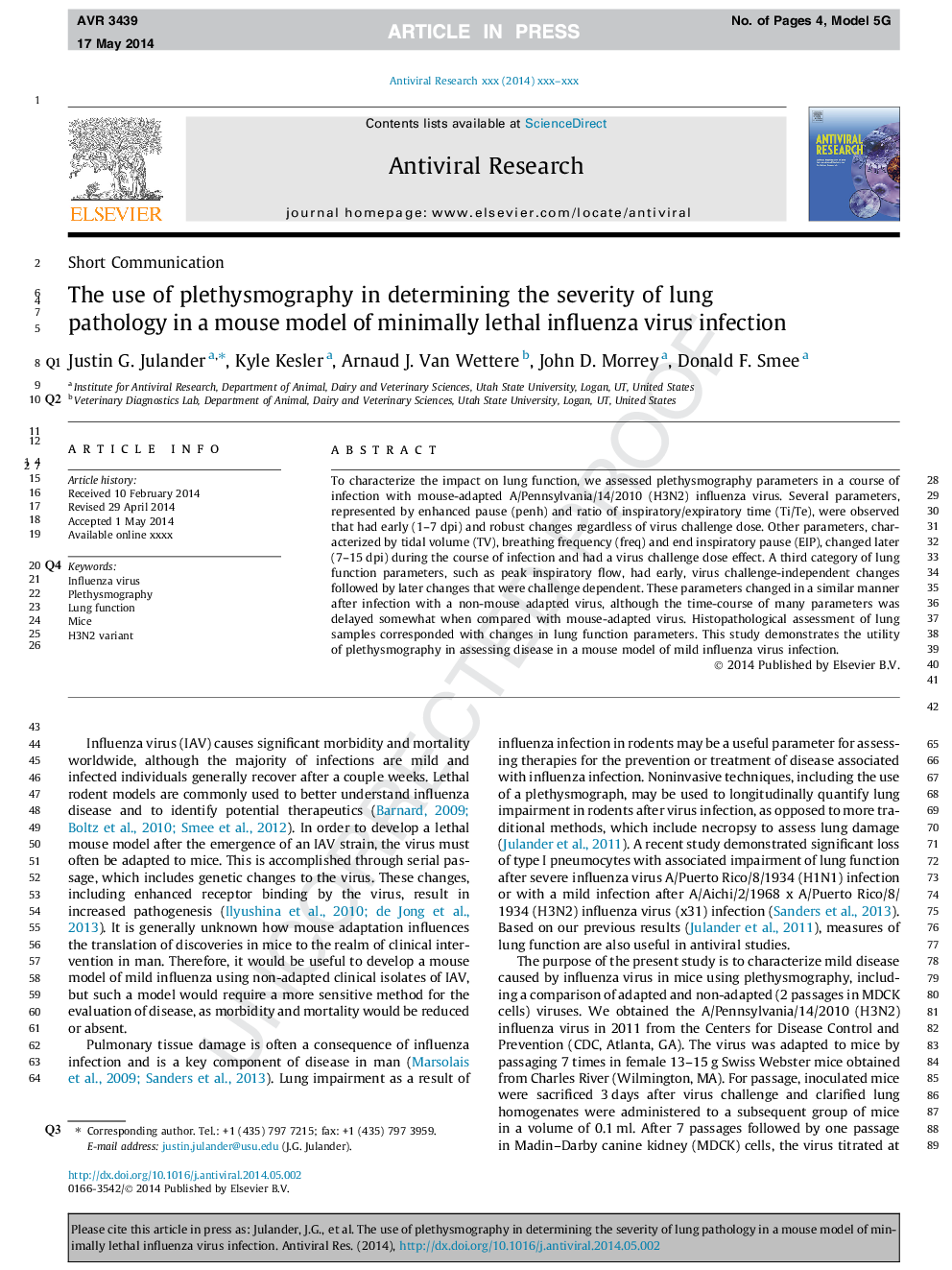| Article ID | Journal | Published Year | Pages | File Type |
|---|---|---|---|---|
| 5822245 | Antiviral Research | 2014 | 4 Pages |
Abstract
To characterize the impact on lung function, we assessed plethysmography parameters in a course of infection with mouse-adapted A/Pennsylvania/14/2010 (H3N2) influenza virus. Several parameters, represented by enhanced pause (penh) and ratio of inspiratory/expiratory time (Ti/Te), were observed that had early (1-7Â dpi) and robust changes regardless of virus challenge dose. Other parameters, characterized by tidal volume (TV), breathing frequency (freq) and end inspiratory pause (EIP), changed later (7-15Â dpi) during the course of infection and had a virus challenge dose effect. A third category of lung function parameters, such as peak inspiratory flow, had early, virus challenge-independent changes followed by later changes that were challenge dependent. These parameters changed in a similar manner after infection with a non-mouse adapted virus, although the time-course of many parameters was delayed somewhat when compared with mouse-adapted virus. Histopathological assessment of lung samples corresponded with changes in lung function parameters. This study demonstrates the utility of plethysmography in assessing disease in a mouse model of mild influenza virus infection.
Related Topics
Life Sciences
Immunology and Microbiology
Virology
Authors
Justin G. Julander, Kyle Kesler, Arnaud J. Van Wettere, John D. Morrey, Donald F. Smee,
